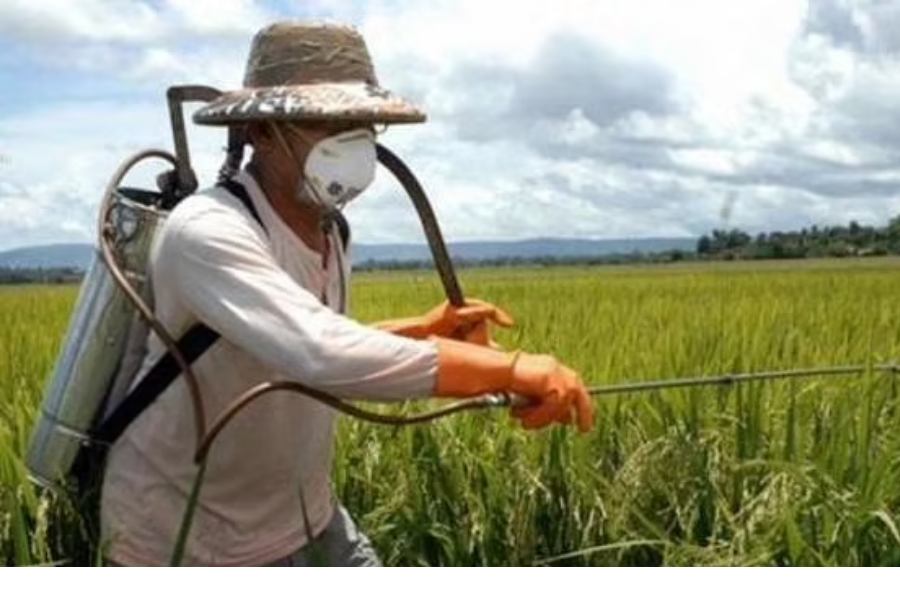Agrochemicals: New avenues for growth
India is the fifth largest producer and importer of agrochemicals. However, it needs to strengthen its presence in the herbicide segment, which is among the fastest growing segments in the industry globally.
- Global exports of the agrochemical industry have more than tripled between 2001 and 2019. From US$ 10.6 billion in 2001, the exports have grown at a CAGR of 7% and reached US$ 36.6 billion in 2019.
- The market is projected to reach US$ 336.4 billion by 2026.
- India is the fifth-largest producer as well as importer of agrochemicals. But it is a trade surplus producing sector. In 2019, India exported US$ 3.4 billion worth of agrochemicals and recorded a trade surplus worth US$ 2.1 billion. Exports have grown at 16% p.a. between 2015-19.
- Herbicides are growing in demand in India as well as the world, but it constitutes only 20.32% of India’s production. But, it has grown at a CAGR of 20.1% over the last five years. This indicates that India is clearly attempting to meet global trend but the share in production still needs to increase.
- India imports 52% of its agrochemical requirements from China, followed by the US (14.2%), Belgium (5.1%), and Japan (4.4%). This heavy reliance needs to be reduced.
- India’s agrochemicals are as competitive as those of the top importers, except in the case of fungicides. And, India enjoys zero tariffs from all the top markets of agrochemicals except USA.

The rising global population and the consequent demand for food have paved the way for the increased demand for plant protection products (PPPs) to increase the yield over the past few decades. Insecticides, Herbicides, Fungicides, and Rodenticides are the main categories of PPPs or pesticides that are produced by the agrochemical industry.
Global trends indicate that exports in this industry have more than tripled between 2001 and 2019. From US$ 10.6 billion in 2001, the exports have grown at a CAGR of 7% and reached US$ 36.6 billion in 2019. Asia and Europe alone constitute 82% share and Brazil is the biggest importer of agrochemicals followed by France and Germany. Moreover, the global agrochemical market is projected to reach US$ 336.4 billion by 2026.
In this global landscape, India is the fifth-largest producer of agrochemicals, accounting for 9.5% of global production. It is also the fifth-largest importer and has imported US$ 1.15 billion worth of agrochemicals on an average in the last 5 years. However, exports worth US$ 3.4 billion (in 2019) exceeded the imports, giving India a trade surplus of US$ 2.1 billion in 2019. The sector is highly capable too, which is clear from the 16% p.a. growth experienced between 2015 to 2019 alone.
But, the road that India is traversing seems to be slightly different from the path that global markets demand. Herbicides, which is the most demanded segment in the world, constitutes only 20.32% share in India’s production. However, insecticides and fungicides constitute 45% and 37.82% share in production respectively. Interestingly, herbicides and fungicides remain highly demanded segments within India too, owing to the increased emphasis on horticulture and substitution of labour.
On the export front on the other hand, herbicides are among the fastest growing categories of agrochemicals, growing at a CAGR of 20.1% between 2015 to 2019, only bettered by insecticides (CAGR of 23.26% over the last five years). This indicates that India is trying to increase its pace to meet global demand requirements in herbicides, but the share in production as well as domestic consumption is still quite low.
In 2019-20, exports of insecticides were the largest (Rs. 9,734 crore) followed by herbicides (Rs. 7,506.5 crore). The main markets to which India exported were the US in the case of herbicides (US$ 471 million, approx. 41.6% of India’s exports) and Brazil for insecticides (US$ 443.7 million, 29.7% of India’s exports) and fungicides (US$ 102.5 million, 15.8% of India’s exports).
India’s import basket during the same time was dominated by miscellaneous items, which constituted a share of about 44%. In 2019-20, India imported Rs. 8,89,494 lakh worth of agrochemicals. Out of this, imports of miscellaneous items alone was Rs.3,93,111 lakh. This was followed by insecticides whose value of imports stood at Rs. 2,69,051 lakh. But the issue here is the lack of diversification of source countries. About 52% of India’s imports are based in China, followed by the US (14.2%), Belgium (5.1%), and Japan (4.4%). This indicates heavy reliance on China, that needs to be addressed urgently.
At the same time, India has some strong advantages ion this sector and has proved its mettle as a major exporter of all classes of agrochemicals. Its only in the case of fungicides where countries other than India, can be considered to be exporting niche products. This is evident from the export prices offered by France, which is the largest exporter of fungicides.
France exported a unit at US$ 10,402 in 2019, whereas Indian prices stood significantly low in comparison, at US$ 3,385 per unit in 2019. And, on the flip side, it pays zero duty to all top importers of agrochemicals. The only exception, in this case, is the US, which is among the top importers of all agrochemical classes. However, India is bound at 2.8% duty for insecticides and 6.5% duty for other agrochemicals. This can be a component of trade negotiations by India as it seeks concessions from US as part of a mini deal.












Leave a comment